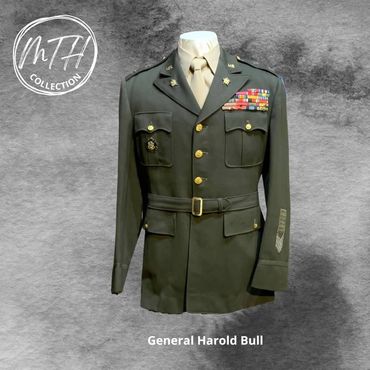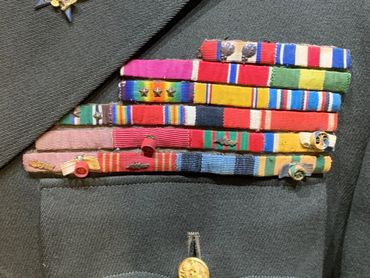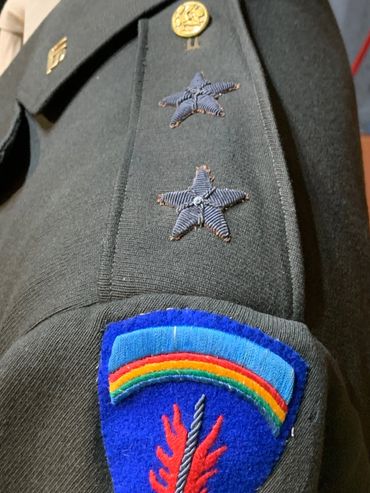General Mark Clark




Details Of The Artifacts
Tan 4-pocket service coat with all orginal insinia and ribbons.
A Bit Of History About General Mark Clark
During the Korean War, General Clark succeeded General Matthew Ridgway as commander of the United Nations Command on May 12, 1952 when he was confronted with a military deadlock on the front lines along the 38-th Parallel and stalled Armistice negotiations. Clark boldly advocated a broad based attack including bases along the Yalu River. However, President Truman did not approve his plan since it would have widened the war.
When President-elect Dwight Eisenhower visited Korea on December 2 – 5, 1952, Clark presented him with a broad plan for victory, but Eisenhower was more interested in “honorable truce” to end the war. Clark communicated with North Korea's Communist despot Kim Il Sung that resulted in the Korean Armistice Agreement.
General Clark signed the Korean Armistice Agreement on July 27, 1953 on behalf of the United Nations Command with the North Korean Army and the Chinese People’s Volunteers at the U.N. Command advance headquarters at Munsan-ni, Korea. He believed that he was the first U.S. Commander to sign an Armistice Agreement without a victory, he made the comment “I cannot find it in me to exalt at this hour”. He served as commander until October 7, 1953.
Harold Bull




Details Of The Artifacts
Green 4 pocket service coat named to General Bull with orginal stars, chevrons, and ribbon bar.
A Bit Of History About General Harold Bull
Special tactical problems anticipated in the initial D-Day attack were many, demanding some of the most difficult, solutions. General Eisenhower met frequently with his principal subordinates to discuss and fit together evolving plans; often experts and specialists of a variety of categories attended these meetings to give technical advice.
A constant adviser in all tactical and operational affairs was general Harold Bull who lead Eisenhower’s G-3 section (operations) and served with Eisenhower from Tunisia through the European campaign. According to Eisenhower’s book Crusade in Europe “Men like General Bull were generals that I reposed the greatest confidence”